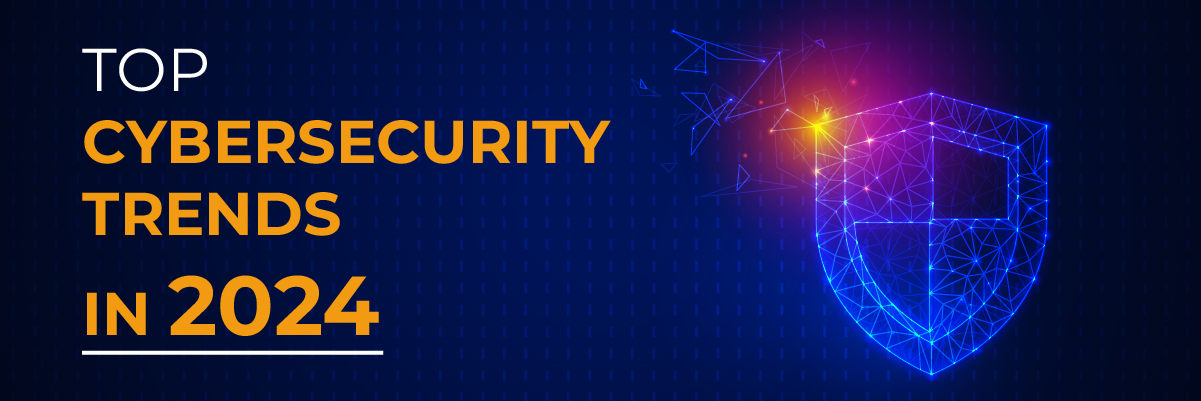7. IoT Security Focus
The proliferation of Internet of Things (IoT) devices introduces new entry points for cyber threats. Organizations are intensifying their efforts to secure IoT devices, implementing robust encryption, authentication, and monitoring mechanisms.
8. DevSecOps Integration
Integrating security into the DevOps process from the outset, known as DevSecOps, is gaining traction. This approach ensures that security measures are seamlessly integrated throughout the development lifecycle, enhancing overall system security.
9. Biometric Authentication
Traditional passwords are increasingly being replaced by more secure biometric authentication methods. Fingerprint recognition, facial recognition, and other biometric measures add an extra layer of security to user authentication.
10. Global Collaboration against Cyber Threats
Cyber threats are borderless, and collaboration is key. In 2024, there is a growing emphasis on global cooperation among governments, businesses, and cybersecurity professionals to share threat intelligence and collectively strengthen defenses against cyber threats.
Generative AI: Short-term Skepticism, Longer-Term Hope
Generative AI, often hailed as a harbinger of innovation and progress, evokes a spectrum of reactions within the cybersecurity landscape. While its potential to revolutionize various industries is undeniable, skepticism looms large in the short term, particularly concerning its implications for cybersecurity.
At the heart of this skepticism lies the concern over vulnerabilities inherent in IoT (Internet of Things) devices. As Generative AI continues to advance, the integration of AI and ML (Machine Learning) algorithms into IoT ecosystems introduces new avenues for exploitation. Malicious actors could leverage these technologies to orchestrate sophisticated cyber attacks, exploiting vulnerabilities in interconnected systems with unprecedented precision and scale.
However, amidst the prevailing skepticism, there exists a glimmer of hope for the longer term. Generative AI, when wielded judiciously, holds the potential to bolster cybersecurity defenses and mitigate emerging threats. By harnessing the power of AI and ML, cybersecurity professionals can proactively identify and address vulnerabilities, fortifying IoT infrastructures against potential breaches.
As we navigate the evolving landscape of cybersecurity in 2024, the intersection of Generative AI, IoT vulnerabilities, and advanced machine learning algorithms will undoubtedly shape the top cybersecurity trends. Embracing a nuanced perspective that acknowledges both the short-term challenges and the longer-term opportunities inherent in Generative AI is paramount to fostering a resilient cybersecurity ecosystem capable of withstanding the ever-evolving threat landscape.
Cybersecurity Outcome-Driven Metrics: Bridging Boardroom Communication Gap
Amidst the perpetual evolution of cybersecurity threats and the increasing sophistication of hacking techniques in 2024, aligning security operations with business objectives is paramount. This is where outcome-driven metrics (ODMs) step in, aiming to provide clarity and guidance amidst the escalating digital risks and broader organizational goals.
Let’s explore the escalating relevance of ODMs for cybersecurity teams and Security Operations Centers (SOCs), showcasing how they can revolutionize cybersecurity management. We’ll delve into examples of outcome-driven metrics and analyze prevailing trends in cybersecurity to underscore their significance.
The Importance of ODMs for Cybersecurity
The importance of Original Design Manufacturers (ODMs) for cybersecurity is paramount in shaping the future of cybersecurity. As the creators of hardware and software foundations, ODMs play a critical role in integrating the latest cybersecurity trends directly into devices and systems. By embedding security features from the outset, ODMs can better address emerging cybersecurity trends and evolving threats. This proactive approach ensures robust protection against vulnerabilities and enhances the resilience of digital infrastructure. As a result, ODMs are essential for developing innovative solutions that safeguard data and maintain the integrity of an increasingly interconnected world.
Conclusion
As we conclude our exploration of the top cybersecurity trends in 2024, it is evident that the future of digital security is dynamic and challenging. The ever-evolving threat landscape necessitates a proactive and adaptive approach to cybersecurity. Organizations must not view cybersecurity as a mere necessity but rather as a cornerstone of their operations.
In this crucial journey toward fortified defenses, it’s essential to mention leaders like Protected Harbor. As one of the top cybersecurity providers in the United States, they stand at the forefront of technology and security innovation. With a commitment to staying ahead of emerging threats, Protected Harbor exemplifies the proactive approach needed to navigate the intricate cybersecurity landscape of 2024.
The interconnected world of 2024 demands not only robust defense mechanisms but also strategic partnerships with industry leaders. By aligning with trusted cybersecurity partners, organizations can enhance their security posture and better safeguard their digital assets.
Take the next step in securing your digital future! Contact Protected Harbor today and discover how our cutting-edge solutions can empower your organization to thrive in the digital age. Don’t just meet cybersecurity challenges; conquer them with confidence. Your digital resilience begins here!







